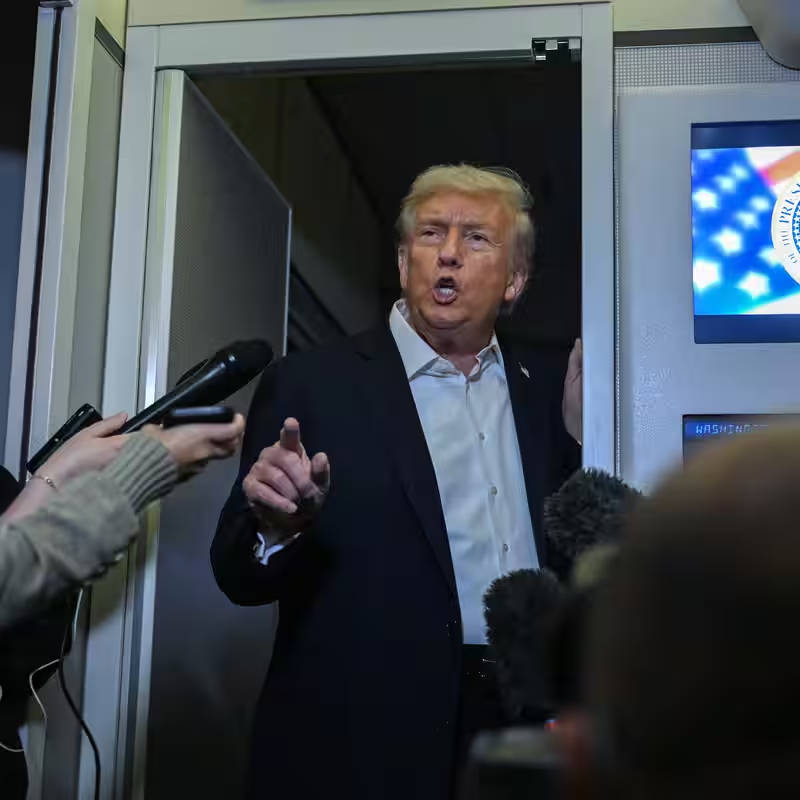Table of Contents
- Anti-Trump Ads Dominate 2025 Campaigns
- New Jersey, Virginia, and Beyond
- Is This Strategy Backfiring?
- What Voters Are Saying
- Can Democrats Move Beyond Trump?
- Sources
Democrats Double Down on Anti-Trump Messaging in 2025 Races
It’s 2025—and yet, across statehouses and airwaves, one name still dominates Democratic campaign strategy: Donald Trump. Despite losing the White House in 2024, Trump remains the central boogeyman in Democratic ads from New Jersey to California, as the party leans heavily on fear of his influence to rally voters in off-year elections.
“The Trump of Trenton.” “Sears speaks for Trump.” “We can stop Trump cold.” These aren’t slogans from 2020—they’re the backbone of 2025 Democratic messaging, even in races where Trump isn’t on the ballot.
New Jersey, Virginia, and Beyond
In New Jersey’s heated governor’s race, Democrat Phil Murphy’s allies have unleashed the most expensive attack ad of the cycle, branding Republican Jack Ciattarelli as a would-be authoritarian eager to mirror Trump’s playbook in Trenton.
Meanwhile, in Virginia, Democratic nominee Abigail Spanberger has poured millions into TV spots tying Lt. Gov. Winsome Earle-Sears directly to Trump, warning voters that a Sears win would mean “Trump’s agenda in Richmond.”
Even in California—a state Trump lost by double digits—Governor Gavin Newsom is using Trump’s shadow to promote a ballot measure on redistricting. “We can stop Trump cold,” he declares in one widely aired ad, despite Trump holding no formal power in the state.
Is This Strategy Backfiring?
While anti-Trump messaging has historically energized the Democratic base, some party insiders worry it’s become a crutch—one that avoids articulating a clear, positive vision for the future.
“I worry that Donald Trump is like crack cocaine for our party,” said Celinda Lake, a veteran Democratic pollster. “It gives you a quick high, but it doesn’t build long-term loyalty or trust.”
After losing both the presidency and the Senate in 2024, Democrats spent months debating how to rebrand. Yet as 2025 races heat up, many campaigns have reverted to what feels safe: painting every Republican as an extension of Trumpism.
| State | Democratic Message | Trump Mentioned? |
|---|---|---|
| New Jersey | “Ciattarelli = Trump of Trenton” | Yes |
| Virginia | “Sears speaks for Trump” | Yes |
| California | “Stop Trump cold with redistricting reform” | Yes |
What Voters Are Saying
Focus groups in swing suburbs suggest mixed reactions. Some progressive voters say the Trump framing “makes the stakes clear.” But independents and moderate Republicans often see it as recycled fear-mongering.
“I get it—they’re scared,” said Maria Lopez, a registered independent in Fairfax County, Virginia. “But I want to know what they’ll *do*, not just who they’re against.”
Younger voters, in particular, express fatigue. “We’ve heard this since 2016,” said college student Jordan Kim in Newark. “At some point, you’ve got to tell us what you’re *for*.”
Can Democrats Move Beyond Trump?
With the 2026 midterms looming, the question isn’t just tactical—it’s existential. Relying on Trump as a foil may win a few state races in 2025, but it risks leaving the party without a compelling identity when he’s no longer in the headlines.
As one Democratic strategist put it: “You can’t build a house on quicksand. And Trump won’t be around forever.”




